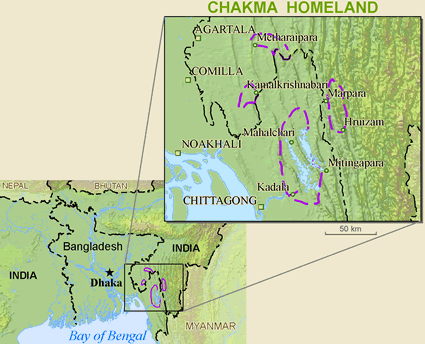Indian Polity
Protests in Mizoram over Citizenship Bill
- 28 Jan 2019
- 6 min read
Apart from other Northeastern states recently Mizoram has witnessed massive demonstrations over the Citizenship (Amendment) Bill 2016.
- This protest was organised by the influential Mizo Zirlai Pawl (MZP) which is a Mizo multinational student organization and apex students body in Mizoram state.
Reasons for Protest
- In Mizoram, the concern is not about Hindu immigrants from Bangladesh like in Assam, Meghalaya and Tripura but about Chakmas, a tribal and largely Buddhist group.
- The Chakmas are present in parts of the Northeast, and the Chittagong Hill Tracts of Bangladesh, with which Mizoram shares an international border.
- The state has seen ethnic violence, with instances of arson, names of Chakmas being struck off voters’ lists, and denial of admission to Chakma students in college.
- MZP which is leading the current agitation, have often cited figures they attribute to the Census. In 1901, there were only 198 Chakmas in Mizoram and by 1991 it was over 80,000.
- According to MZP the growth rate is far more than normally possible which proves that there has been influx from Bangladesh.
- At the same time Chakma activists cite a 2015 report submitted by the government of Mizoram to the National Human Rights Commission(NHRC) according to which the legitimacy of the Census figures between 1901 and 1941 cannot be ascertained as the same are not available with the Census Directorate, Mizoram.
- The report cites Census data that puts the Chakma population at 15,297 in 1951 and 96,972 in 2011.
Who are Chakmas?
- The Chakmas are ethnic people who lived in the Chittagong Hill Tracts, most of which are located in Bangladesh.
- Chakmas are predominantly Buddhists. They are found in northeast India, West Bengal, Bangladesh, and Myanmar.
- The Chakmas living in India are Indian citizens. Some of them, mostly from Mizoram, live in relief camps in southern Tripura due to tribal conflict with Mizos. These Indian Chakmas living in Tripura take part in Mizoram elections too. The Election Commission sets up polling booths in relief camps.
- The Chakmas living in the Chittagong Hill Tracts fled erstwhile East Pakistan in 1964-65, since they lost their land to the development of the Kaptai Dam on the Karnaphuli River.
- They also faced religious persecution as they were non-Muslims and did not speak Bengali. They eventually sought asylum in India. The Indian government set up relief camps in Arunachal Pradesh and a majority of them continue to live there even after five decade.(According to the 2011 census, 47,471 Chakmas live in Arunachal Pradesh alone.)
Problem With Chakmas in Arunachal Pradesh
- In the 1960s, the Chakma refugees were accommodated in the relief camps constructed in the "vacant lands" of Tirap, Lohit and Subansiri districts of the erstwhile North-East Frontier Agency (NEFA), a political division governed by the Union government.
- In 1972, NEFA was renamed Arunachal Pradesh and made a Union Territory, and subsequently, it attained statehood.
- The locals and regional political parties opposed resettling refugees in their land fearing that it may change the demography of the State and that they may have to share the limited resources available for them.
Inclusion of Chakmas in Bangladesh
- The Chakmas opposed their inclusion in undivided Pakistan during Partition. They later opposed their inclusion in Bangladesh when East Pakistan was fighting the Liberation War with West Pakistan, on grounds that they are an ethnic and religious minority group.
- A group of Chakmas resorted to armed conflict with Bangladeshi forces under the name 'Shanti Bahini'. The conflict increased the inflow of refugees to India.
- In 1997, the Bangladeshi government headed by Sheikh Hasina signed a peace accord with the Shanti Bahini, which resulted in the end of the insurgency.
- According to the accord, the Chakma, Marma, Tripura, Murang and Tanchangya were acknowledged as tribes of Bangladesh entitled for benefits and a Regional Council was set up to govern the Hill Tracts. The agreement also laid out plans for the return of land to displaced natives and an elaborate land survey to be held in the Hill Tracts.
- Bangladesh was willing to take back a section of Chakma refugees living in India, but most of them were unwilling, fearing the return of religious persecution.
Granting Citizenship to Chakmas
- In 2015, the Supreme Court directed the Centre to grant citizenship to Chakma who had migrated from Bangladesh in 1964-69.
- The order was passed while hearing a plea by the Committee for Citizenship Rights of the Chakmas. Following this, the Centre introduced amendments to the Citizenship Act, 1955.
- The Bill is criticized over making illegal immigrants eligible for citizenship on the basis of religion, which is a violation of Article 14 of the Constitution.




